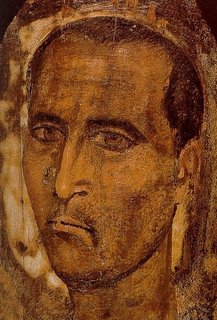St. Nicholas Owen

Nicholas, familiarly known as "Little John," was small in stature but big in the esteem of his fellow Jesuits.
Born at Oxford, this humble artisan saved the lives of many priests and laypersons in England during the penal times (1559-1829), when a series of statutes punished Catholics for the practice of their faith. Over a period of about 20 years he used his skills to build secret hiding places for priests throughout the country. His work, which he did completely by himself as both architect and builder, was so good that time and time again priests in hiding were undetected by raiding parties. He was a genius at finding, and creating, places of safety: subterranean passages, small spaces between walls, impenetrable recesses. At one point he was even able to mastermind the escape of two Jesuits from the Tower of London. Whenever Nicholas set out to design such hiding places, he began by receiving the Holy Eucharist, and he would turn to God in prayer throughout the long, dangerous construction process.
After many years at his unusual task, he entered the Society of Jesus and served as a lay brother, although—for very good reasons—his connection with the Jesuits was kept secret.
After a number of narrow escapes, he himself was finally caught in 1594. Despite protracted torture, he refused to disclose the names of other Catholics. After being released following the payment of a ransom, "Little John" went back to his work. He was arrested again in 1606. This time he was subjected to horrible tortures, suffering an agonizing death. The jailers tried suggesting that he had confessed and committed suicide, but his heroism and sufferings soon were widely known.
He was canonized in 1970 as one of the 40 Martyrs of England and Wales.
Nicholas was a clever builder and architect who used his skills to protect endangered priests. Without his help, hundreds of English Catholics would have been deprived of the sacraments. His gift for spotting unlikely places to hide priests was impressive, but more impressive was his habit of seeking support for his work in prayer and the Eucharist. If we follow his example, we may also discover surprising ways to put our skills to God’s service.


0 Comments:
Post a Comment
<< Home